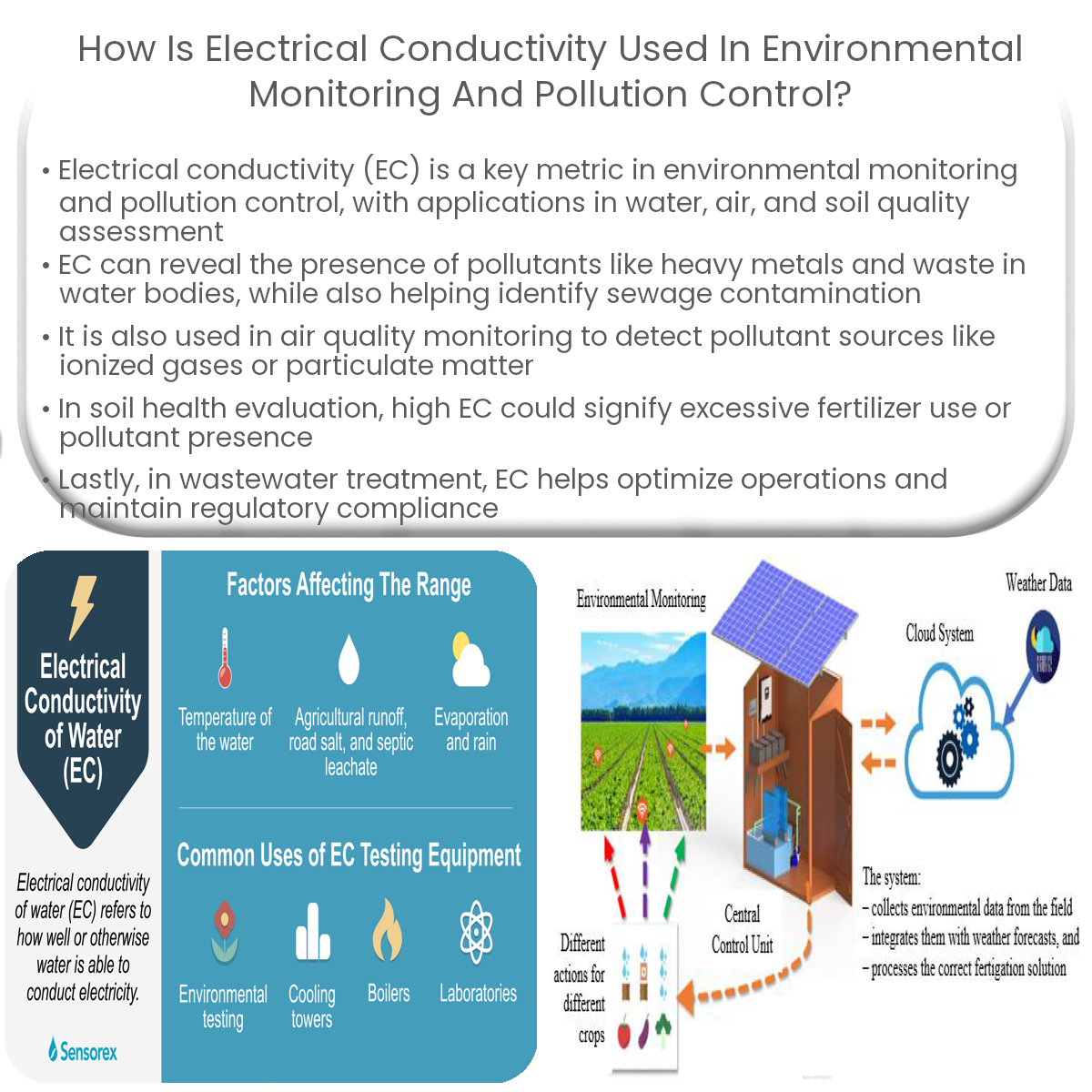Electrical conductivity is crucial in environmental monitoring for assessing water, air, and soil quality, detecting pollutants, and optimizing wastewater treatment.
Electrical Conductivity in Environmental Monitoring and Pollution Control
Electrical conductivity (EC) is a crucial parameter in environmental monitoring and pollution control, as it measures a material’s ability to conduct an electric current. In the context of water quality assessment, it is a reliable indicator of dissolved ions, nutrients, and contaminants.
Water Quality Assessment
EC is often used to monitor water quality in rivers, lakes, and groundwater. An increase in EC may indicate the presence of pollutants such as heavy metals, salts, or industrial and agricultural waste. Conversely, a decrease in EC could signify excessive dilution or the presence of non-ionic substances like organic matter.
- Monitoring Salinity: Salinity is a critical factor in both freshwater and marine environments. Excessive salt concentrations can harm aquatic life and affect water usability. EC is used to determine salinity levels, helping authorities take corrective action to protect ecosystems.
- Identifying Sewage Pollution: High EC values may indicate the presence of sewage pollution in water bodies. Sewage contains high concentrations of nutrients and salts, which increase conductivity. Timely detection of sewage pollution helps prevent the spread of waterborne diseases and maintain ecological balance.
Air Pollution Monitoring
EC can be employed to monitor air pollution, as airborne particles and gases can influence its conductivity. By measuring the EC of the air, it is possible to detect changes in pollution levels and identify pollutant sources. For instance, increased EC in the air could indicate the presence of ionized gases or particulate matter from industrial emissions or vehicle exhausts.
Soil Quality Monitoring
Soil EC is a vital parameter for assessing soil health, fertility, and pollution levels. High EC levels in soil may indicate excessive fertilizer use or the presence of pollutants such as heavy metals, which can harm plants and contaminate water resources. Monitoring soil EC helps determine the need for corrective measures like soil amendments or changes in agricultural practices.
Wastewater Treatment and Pollution Control
EC is an essential tool in wastewater treatment and pollution control processes. By monitoring EC, treatment plants can optimize their operations and ensure compliance with environmental regulations. For instance, high EC in treated wastewater may require further treatment to remove contaminants or adjust the salt balance before discharge into the environment.
In summary, electrical conductivity plays a vital role in environmental monitoring and pollution control, providing valuable information on water, air, and soil quality. By understanding EC changes, we can better protect our environment and resources for future generations.


